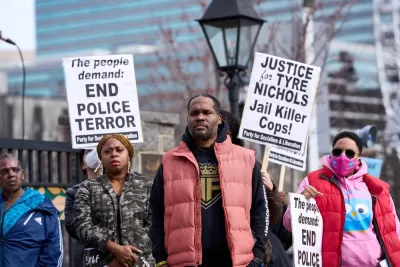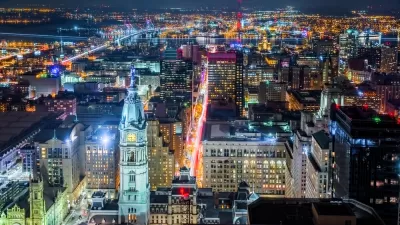The irony is unmistakable. Public surveillance cameras, long controversial in the criminal justice community, provided pivotal video footage of the beating of motorist Tyre Nichols by five Memphis police officers at a traffic stop on January 7.

While the bulk of the video of the police confrontation with 29-year-old Tyre Nichols resulting from a traffic stop on January 7 was taken by body cameras worn by the Memphis police officers, a SkyCop camera “affixed to a utility pole in a white metal box with a bright blue light” also trained on the incident, reported Rick Rojas and Jesus Jiménez for The New York Times on February 1. Nichols died three days later.
It “has been widely regarded as critical in shaping the public’s understanding of what unfolded after the police pulled over Mr. Nichols that night, by offering an unobstructed bird’s-eye view.”
“Glory be to God that a SkyCop camera was there to catch what happened,” Van D. Turner Jr., the president of the Memphis branch of the N.A.A.C.P., said last week.
“The sky cam video makes the difference,” said the Rev. Dr. J. Lawrence Turner, the pastor of the Mississippi Boulevard Christian Church in Memphis, where Mr. Nichols’s funeral is to be held on Wednesday, adding that if “we were only left with the body cam footage,” it would still be harrowing and infuriating, but possibly not as conclusive to prosecutors as they considered charges against the officers. Five of them were charged with second-degree murder, among other things, last week for the death of Mr. Nichols.
The cameras remain controversial despite the important video footage they provided of the traffic stop.
“Camera systems like SkyCop, which have been adopted by police departments around the country, have been criticized by activists and privacy advocates as a costly investment that does little to deter crime while adding to the overbearing presence that the police often have in neighborhoods — especially poor ones — where the cameras have proliferated,” add Rojas and Jiménez.
“It just so happens that in the case of Tyre, those cameras worked out in that way,” said Chelsea Glass, an organizer with Decarcerate Memphis, a group pushing for overhauling the criminal justice system.
“It’s not really about the cameras,” said Duane T. Loynes Sr., a professor at Rhodes College in Memphis whose research focuses on the strained relationship between the Black community and law enforcement. “It’s about who’s in charge of the cameras.”
Hat tip to Bloomberg City Lab.
FULL STORY: As Officers Beat Tyre Nichols, a Crime-Fighting Camera Watched Over Them

Study: Maui’s Plan to Convert Vacation Rentals to Long-Term Housing Could Cause Nearly $1 Billion Economic Loss
The plan would reduce visitor accommodation by 25,% resulting in 1,900 jobs lost.

North Texas Transit Leaders Tout Benefits of TOD for Growing Region
At a summit focused on transit-oriented development, policymakers discussed how North Texas’ expanded light rail system can serve as a tool for economic growth.

Using Old Oil and Gas Wells for Green Energy Storage
Penn State researchers have found that repurposing abandoned oil and gas wells for geothermal-assisted compressed-air energy storage can boost efficiency, reduce environmental risks, and support clean energy and job transitions.

Private Donations Propel Early Restoration of Palisades Playground
Los Angeles has secured over $1.3 million in private funding to restore the Pacific Palisades playground months ahead of schedule, creating a modern, accessible space that supports community healing after recent wildfires.

From Blight to Benefit: Early Results From California’s Equitable Cleanup Program
The Equitable Community Revitalization Grant (ECRG) program is reshaping brownfield redevelopment by prioritizing projects in low-income and environmental justice communities, emphasizing equity, transparency, and community benefits.

Planting Relief: Tackling Las Vegas Heat One Tree at a Time
Nevada Plants, a Las Vegas-based nonprofit, is combating the city’s extreme urban heat by giving away trees to residents in underserved neighborhoods, promoting shade, sustainability, and community health.
Urban Design for Planners 1: Software Tools
This six-course series explores essential urban design concepts using open source software and equips planners with the tools they need to participate fully in the urban design process.
Planning for Universal Design
Learn the tools for implementing Universal Design in planning regulations.
Ascent Environmental
Borough of Carlisle
Institute for Housing and Urban Development Studies (IHS)
City of Grandview
Harvard GSD Executive Education
Toledo-Lucas County Plan Commissions
Salt Lake City
NYU Wagner Graduate School of Public Service




























